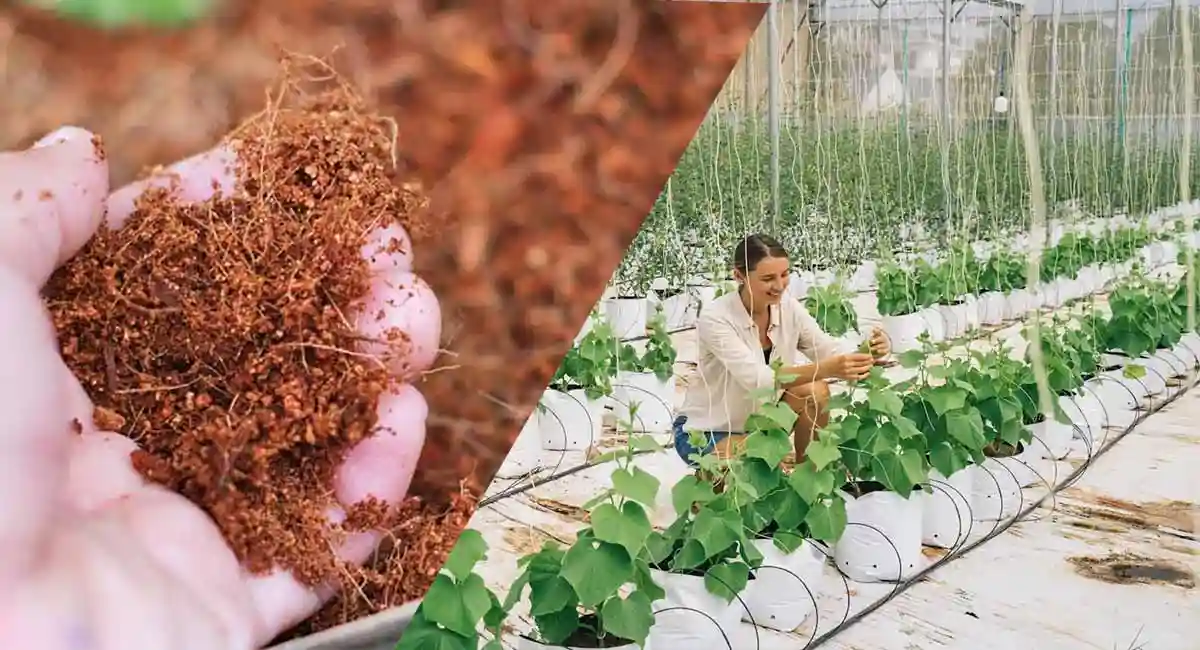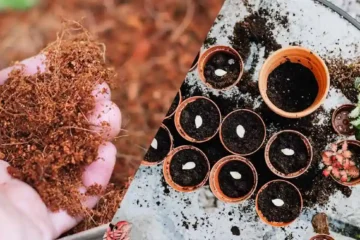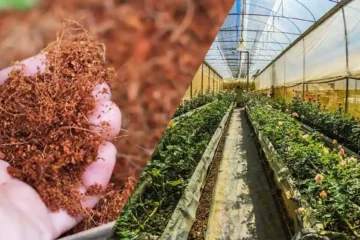In the ever-evolving landscape of modern agriculture, sustainable and eco-friendly solutions are more important than ever. Cocopeat, also known as coir pith or coir dust, has emerged as a promising alternative to traditional soil mediums and peat moss. Derived from the husk of coconuts, cocopeat is a byproduct of the coconut industry, making it both an abundant and renewable resource. This article explores the properties, benefits, applications, and environmental impact of cocopeat, highlighting its potential to revolutionize agriculture and horticulture.
Properties of Cocopeat
Cocopeat is a fibrous material extracted from the outer husk of coconuts. It is light brown in color and has a spongy texture. Its primary components include lignin, cellulose, and other organic materials. One of the standout features of cocopeat is its ability to retain water. It can hold up to eight times its weight in water, making it an excellent growing medium for plants. Additionally, cocopeat has a high cation-exchange capacity, which means it can retain and release nutrients effectively, promoting healthier plant growth.
Physical Properties
- Water Retention: Cocopeat’s remarkable water retention capacity ensures that plants receive a consistent supply of moisture, reducing the frequency of watering.
- Aeration: The fibrous structure of cocopeat allows for excellent aeration, preventing soil compaction and promoting root health.
- pH Level: Cocopeat typically has a neutral to slightly acidic pH (5.5 to 6.5), which is suitable for a wide range of plants.
- Lightweight: Despite its high water retention, cocopeat is lightweight, making it easy to handle and transport.
Chemical Properties
- Nutrient Content: While cocopeat itself is not rich in nutrients, it provides an ideal medium for nutrient absorption and retention when fertilized.
- Cation-Exchange Capacity: Cocopeat can hold onto essential nutrients and release them as needed by plants, enhancing nutrient availability.
- Salinity: High-quality cocopeat has low levels of soluble salts, which is crucial for preventing plant stress and damage.
Benefits of Cocopeat
Environmental Benefits
- Renewable Resource: Unlike peat moss, which is harvested from non-renewable peat bogs, cocopeat is a byproduct of the coconut industry, making it a sustainable and renewable resource.
- Waste Utilization: The production of cocopeat utilizes coconut husks that would otherwise be considered agricultural waste, contributing to waste reduction and resource efficiency.
- Reduced Carbon Footprint: The use of cocopeat in place of peat moss helps reduce the carbon footprint associated with peat extraction and processing.
Agricultural Benefits
- Improved Soil Structure: Cocopeat enhances soil structure by improving aeration and water retention, promoting healthier root systems and plant growth.
- Disease Resistance: Cocopeat has natural antifungal properties that help protect plants from soil-borne diseases.
- Versatility: It can be used in various forms, such as loose cocopeat, compressed bricks, or grow bags, catering to different agricultural needs.
- Hydroponic Systems: Cocopeat is ideal for hydroponic and soilless growing systems due to its ability to retain moisture and nutrients efficiently.
Economic Benefits
- Cost-Effective: As a byproduct, cocopeat is relatively inexpensive compared to other growing mediums, providing a cost-effective solution for farmers and gardeners.
- High Yield: The enhanced water retention and nutrient availability in cocopeat lead to higher crop yields, translating to increased profitability.
Applications of Cocopeat
Horticulture and Gardening
Cocopeat is widely used in horticulture and gardening as a soil amendment or as a standalone growing medium. It is particularly popular for seed starting, potting mixes, and container gardening. Its ability to retain moisture and promote root growth makes it ideal for growing vegetables, flowers, and ornamental plants.
Greenhouses
In greenhouse operations, cocopeat is used extensively for growing a variety of crops, including tomatoes, cucumbers, and peppers. It provides a controlled environment for plants, ensuring optimal growth conditions and higher productivity.
Hydroponics
Cocopeat’s excellent water retention and aeration properties make it a preferred medium for hydroponic systems. It supports the growth of plants in nutrient-rich water solutions without the need for soil, allowing for efficient and sustainable farming practices.
Landscaping
Cocopeat is also used in landscaping projects to improve soil quality and support plant growth. It is particularly beneficial in arid regions where water conservation is crucial. By retaining moisture, cocopeat helps maintain healthy landscapes with reduced irrigation requirements.
Mushroom Cultivation
In mushroom cultivation, cocopeat is used as a substrate due to its ability to hold moisture and provide a suitable growing environment. It supports the growth of various mushroom species, contributing to higher yields and better quality produce.
Environmental Impact of Cocopeat
Positive Impact
- Peatland Conservation: The use of cocopeat reduces the demand for peat moss, helping to conserve peatlands, which are vital carbon sinks and biodiversity hotspots.
- Waste Reduction: By utilizing coconut husks, cocopeat production reduces agricultural waste and promotes sustainable resource use.
- Carbon Sequestration: Coconut palms, from which cocopeat is derived, absorb carbon dioxide from the atmosphere, contributing to carbon sequestration efforts.
Challenges and Considerations
- Quality Control: Ensuring the quality of cocopeat is essential for its effective use. Poor-quality cocopeat with high salt content or contamination can harm plants.
- Sustainability of Production: Sustainable production practices must be maintained to ensure that the environmental benefits of cocopeat are not offset by unsustainable harvesting or processing methods.
- Transportation Emissions: Transporting cocopeat from producing regions to consumers can generate greenhouse gas emissions. Local sourcing and efficient logistics can help mitigate this impact.
Conclusion
Cocopeat represents a sustainable and versatile solution for modern agriculture and horticulture. Its unique properties, such as high water retention, excellent aeration, and neutral pH, make it an ideal growing medium for a wide range of plants. The environmental benefits of using cocopeat, including waste reduction and peatland conservation, further underscore its potential as an eco-friendly alternative to traditional soil amendments.
As the global demand for sustainable agricultural practices continues to grow, cocopeat offers a viable path forward. By embracing cocopeat, farmers, gardeners, and horticulturists can contribute to a more sustainable and resilient agricultural system, ensuring the health and productivity of our crops and ecosystems for generations to come.


